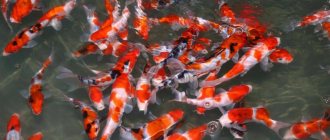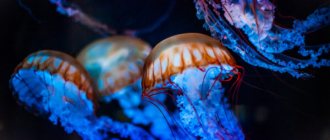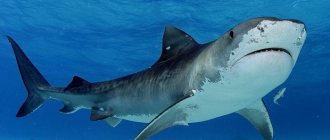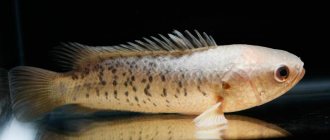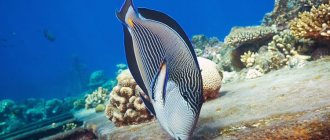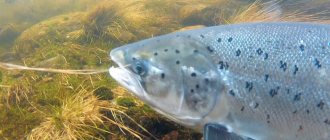Today we will introduce you to amazing fish that look like a ball, tell you about the peculiarities of their behavior and the best species to keep at home.
| Full name | Ballfish/Sphoeroides |
| Kinds | Green, dwarf, gold, reddish, leopard, zebra, kutkutya, fahaka |
| Color | Aquarium species usually have a predominant body color of yellow-green, often with spots. But there are species with a uniform color and other shades |
| Water | PH (acid-base balance) – 6.5–8 KH (hardness) – 1.5-9 °T (temperature) – 23-28 °C |
| Feed | Live food - snails and shells, bloodworms, coretra, tubifex. Frozen food - meat of sea fish and shrimp, boiled chopped liver. Dry food is contraindicated. Tablet food – Tetra FunTips Tablets. |
| Compatibility | Not compatible with other fish, snails and shrimp |
| Lifespan | 5-10 years |
Poisonous or not
When threatened, ball fish release a deadly poison, tetrodotoxin, which blocks the release of sodium in all cells of the human body. The salt cannot escape from the shell, resulting in muscle paralysis. A person dies from cardiac arrest, since the myocardium is equipped with a powerful muscle. The specimen received its second name from the Japanese - fugu. If the fish is inflated, it means the presence of fear or aggression. It is protected by thorns and needles that contain poison.
Habitat
Lives in the Sea of Japan, Atlantic and Indian Oceans. A popular species is called Diodon long-nosed; no toxic compounds were observed in the needles, but there are a lot of toxic substances in the fish’s body. Fans of exotic fish that swell like a balloon are bred in an aquarium. The size reaches up to 16 cm, lives up to 6 years. In the wild, the ball fish grows up to 1 meter within 25 years.
Loves salty, clean waters where many small fish and plankton live. It prefers to lead a hidden, secluded lifestyle, so it rarely encounters predators. The acquisition of an inflated form indicates aggression and insurance. A fish with spines and spines has different names: ball, ball, brown rocktooth. It received its main name from Japanese cooks due to its toxicity. An inflated fish does not pose a danger to humans if it is picked up by the tail.
Diseases and their treatment
Diseases must be treated promptly, otherwise it can lead to the death of fish. The most common diseases:
- Anoxia – lack of oxygen; sign – active respiratory movements and open gills; the fish must be moved to another aquarium rich in oxygen, the water changed, or aeration turned on;
- Cold - due to low air temperature, the fish becomes lethargic and lifeless;
- Chlorine poisoning – due to a drop in water quality, fish become inactive and lose their appetite;
- Fungal diseases - mold or moss-like growths appear on the skin of the fish; such fish must be isolated, water replaced, equipment disinfected;
- Gastrointestinal disorders are a predator that requires animal food; otherwise the fish may even die.
Home maintenance
Thorn fish feels great in a 50 liter container. If two individuals live in the aquarium, then you need to increase the volume of liquid by the same proportion. Under comfortable conditions, sexually mature individuals reach parameters of up to 15 cm. In order for the spiny fish to develop quickly, you need to change the water daily, add a little sea salt, and place an artificial aeration device in the vessel.
Ball fish living in fresh water for a long time will quickly pick up an infection. Salt should be added in a proportion of 15 grams per 20 liters. A fish that swells when in danger can live in an aquarium for more than 3 years.
Puffer fish can live in an aquarium.
For quick adaptation, artificial algae and stones can be placed in the aquarium. The individual likes to hide from prying eyes. It is necessary to prevent air deficiency in water every day; compliance with temperature conditions. Urchin fish should be kept in an environment of +28 degrees. It is recommended to change 10% of the fluid every 24 hours a day. If a round, spiny fish puffs up strongly, this indicates anxiety and a warning to the individual, which looks both cute and scary.
Selection and arrangement of an aquarium
An aquarium for a fish ball can be of any shape. But fish love to jump, so a lid on the aquarium is highly desirable.
Volume
The volume for dwarf tetraodon is 1 to 15 liters per fish. For larger ones - 50-100 liters.
Equipment
Round fish are very voracious and produce large amounts of waste. Therefore, external filtration with a capacity of 7–10 volumes of your aquarium per hour is necessary. As an external filter for one pet, you can suggest Tetra EX 600 Plus, for several – Tetra EX 1200 Plus. If the aquarium population is closer to the maximum, aeration is also necessary.
Lighting for work is standard, 40–60 lumens per liter of capacity. It is advisable to use fluorescent and LED lamps with a cold range (from 6000 K). The required length of daylight for fish is 10–12 hours.
Water requirements
PH (acid-base balance) – 6.5–8.
KH (hardness) – 1.5-9 °H.
t (temperature) – 23-28 °C.
Some species of these fish require salting the water. Table salt or bath salt are not suitable for this; you need to use special aquarium sea salt from a pet store. It is necessary to increase the salinity of water gradually.
Plants, decorations and soil
The soil and decorations should not have sharp parts - the fish will gnaw them and may get injured. In addition, their bare skin is very sensitive. To prevent waste from packing into the substrate, it must be dense enough.
This aquarium fish loves privacy, so you need to create secluded corners for it with the help of plants and decorations. Boulders, driftwood, and ceramics are suitable. Plants need to be planted more densely so that natural thickets form.
What does it eat?
You cannot start introducing dry food and supplements into your diet. If the immune system is weakened, the ball fish may die. The poisonous shar fish prefers to feast on fresh algae; it does not mind eating a few snails, worms, fry, or a piece of beef liver.
You cannot breed puffer fish with small fish in the same aquarium, otherwise the former will eat the latter. If fry appear in the container, for normal growth and development you need to pour organic sand on the bottom; small individuals like to sharpen their teeth. The prickly, round individual looks like a ball during a fight, getting food. A fish that inflates like a balloon loves silence and moves with the school.
Reproduction and breeding
Not all tetraodons breed in captivity. Many are simply caught in the wild.
Preparing fish and aquarium for spawning
Ball fish are ready to breed from the age of one year. For spawning, a couple of future breeders are placed in a separate aquarium of 100 liters or more with plants and shelters. In a larger aquarium you can place two females and a male, but you definitely shouldn’t place two males together - a fight for territory and females will immediately begin, usually with a fatal outcome. Hornwort or cryptocoryne are desirable in the aquarium for spawning, and Java moss on the bottom. To stimulate spawning, fish are fed shellfish and meat, and the water temperature is increased to +28 degrees.
How does spawning occur?
The behavior of a pair of fish during spawning is accompanied by a certain ritual - the male persistently pursues the female, sometimes for quite a long time. When agreement is reached, the couple goes to a secluded place. There the female lays eggs, and the male immediately fertilizes her. At one time, the female can lay up to 500 eggs.
Maintenance and feeding of fry
The male guards the eggs for 8-9 days, until the fry are born. After this, it is better to remove the parents, as they may mistake the fry for food. All small pufferfish have a shell, but by about one month of age it disappears and is replaced by spines. By this time, the ball fish differs from adult specimens only in size and more variegated coloring.
In the first days, babies should be fed “live dust”, microworms, mashed hard-boiled egg yolk. After a month or a month and a half, artemia, daphnia, cyclops and ciliates are added to the diet.
The danger of flavors
Japanese chefs have a special license to prepare this type. People who wanted to cook the delicacy themselves with moderate skills died from muscle paralysis.
The poison is mainly found in the skin, liver, spleen, gall bladder and caviar. With any damage to these organs, a toxic substance leaks out of the cells and even in micro quantities can cause paralysis.
When fish is properly processed, poisoning of the body does not occur after consumption. The cooking technique itself was developed by Japanese chefs, who, after decades, shared it with Russian specialists.
Diet of fish urchins
Urchin fish eat corals. Reefs are formed from the hard limestone skeletons of corals; they are very strong, but they are not able to protect themselves from the teeth of urchin fish.
The fish bites off a piece of coral and crushes it with sharp plates that act as teeth.
Limestone residues accumulate in the stomachs of urchin fish in the form of a powder, which eventually leaves the body. Once they found a hedgehog fish with 0.5 kilograms of coral powder in its stomach. In addition to coral fish, urchins eat oysters and clams.
These fish are only interested in the edible parts of the polyps.
Rules for cleaning the most poisonous specimen from Japanese chefs
Often exotic dishes are ordered by people who prefer to tickle their nerves. Professional chefs of Japanese cuisine sharply and precisely clean the ball fish from the fins and vocal apparatus (the possibility of poison getting into the fillet is excluded). Then the poisonous organs are carefully and slowly removed, the fillet is cut into thin, identical pieces, and the raw materials are washed under running water. Normally, the fillet looks like thin transparent slices and tastes like chicken.
Every year in Japan, hundreds of people die after eating fugu fish, since the market is not interested in cooking knowledge, sellers take most of the money they can get.
Attention, the dishes are given for general information, in order to prepare poisonous fish professionally, you must receive formal, additional education in order to avoid poisoning. Otherwise, before eating the food, you should make a will and say goodbye to your family and friends. Many deaths have been recorded in eastern countries due to improper preparation of poisonous fish. Puzzlingly, today there is no government control to identify the illegal sale and culinary processing of life-threatening products. There are many names for Japanese bubble fish dishes.
Fish stew
- Fish fillet 500 g;
- Potatoes -200 g;
- Beetroot - 1 piece;
- Cabbage – 200 g;
- Zucchini – 1/3 pcs;
- Tomatoes -200 g;
- Butter - 1 tbsp;
- Onion -2 pcs;
- Bell pepper – 1 piece;
- Dill parsley to taste;
- Sour cream – 2 cups;
- Broth 100 ml;
- Bay leaf - 1 piece;
- Salt to taste.
Preparation
- Chop the pepper and onion into half rings.
- Fry with cabbage and tomatoes (pre-cut).
- Peel 1/3 of the zucchini and grate on a coarse grater.
- Cut the fillet into slices.
- Place the vegetables in the pan and place the fish pieces in the middle.
- Add chopped dill, parsley, bay leaf.
- The top should be lined with tomatoes.
- Pour a glass of broth, after adding sour cream.
- Cover with a lid and place in the oven for 2 hours (on low heat).
Cooking time 2.5 hours.
Cooking time – 2 hours.
Number of servings – 10.
Calories - 776, fats -82, carbohydrates - 67, proteins -1.9.
Description
In a calm state, the pufferfish has an elongated, pear-shaped body with expressive round eyes and a round mouth. The belly is rounded, extending into a small tail, the surface of the body is soft and smooth. The pectoral fins are located on the sides near the gill covers and guide the fish: with their help, the tetradon can swim not only forward, but also backward.
A swollen fish resembles a pincushion: the smooth surface of the body is covered with spines. The tetraodon usually swells when taken out into the air. After returning to the aquarium, it flounders helplessly on the surface for a few more seconds, then gradually acquires its usual body shape.



